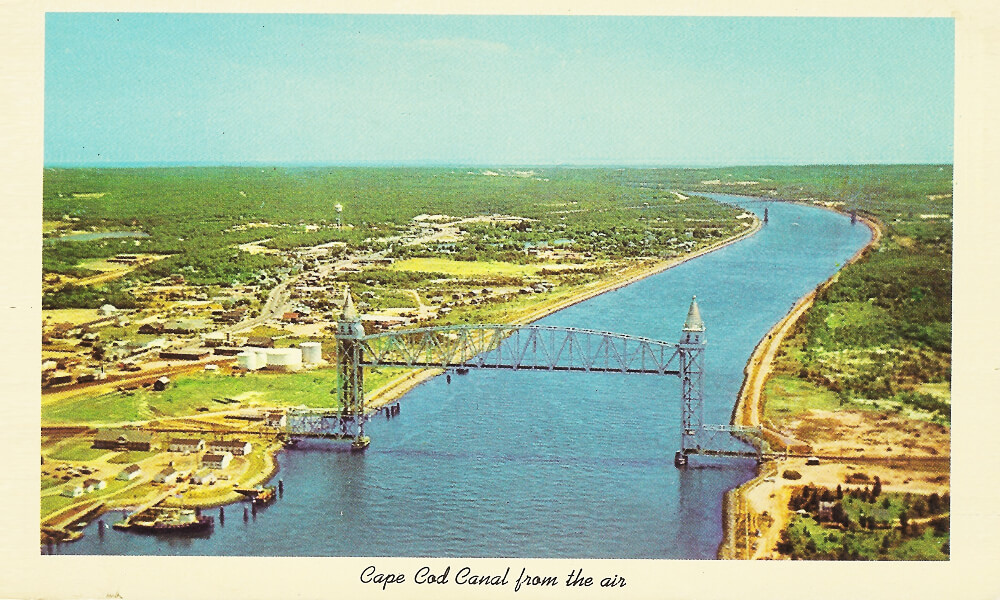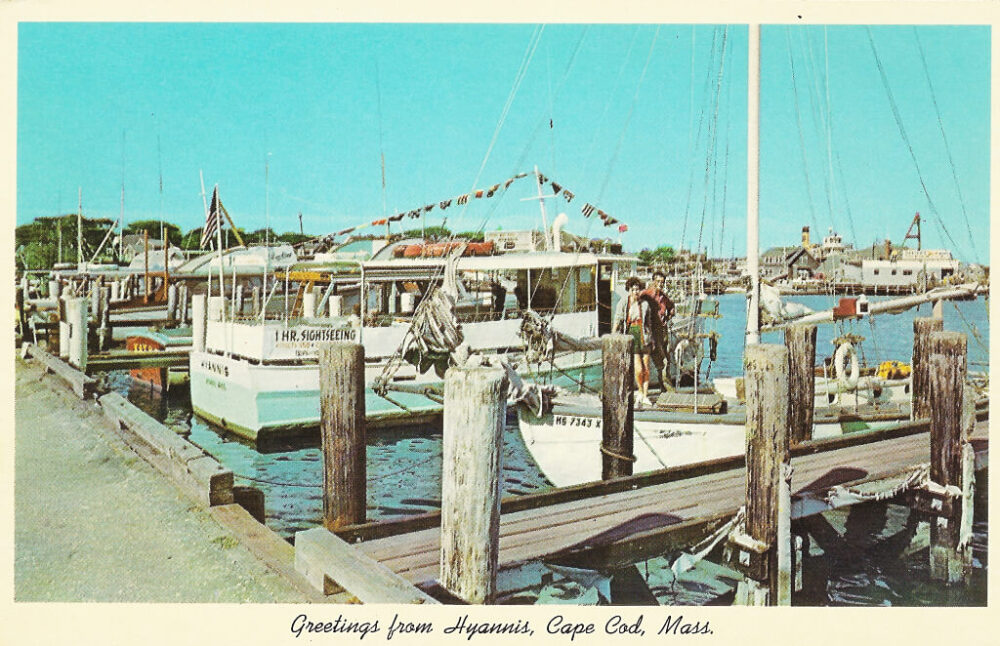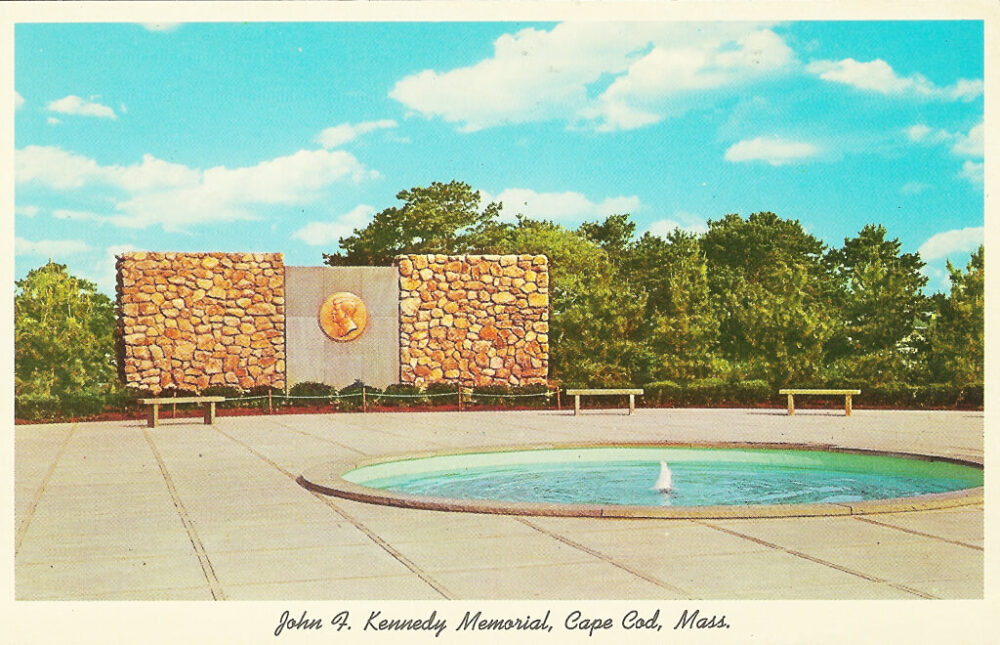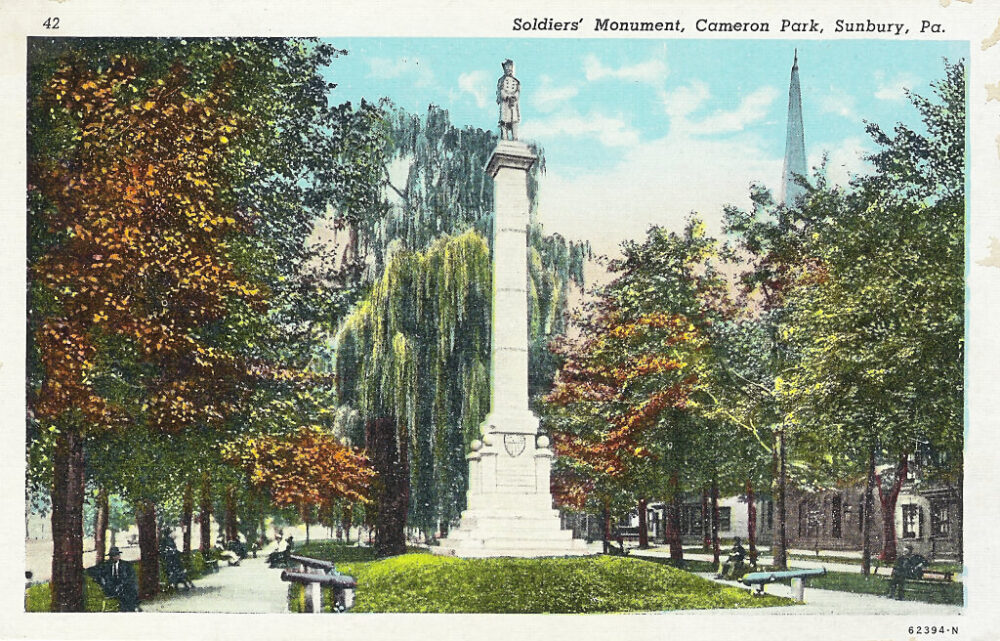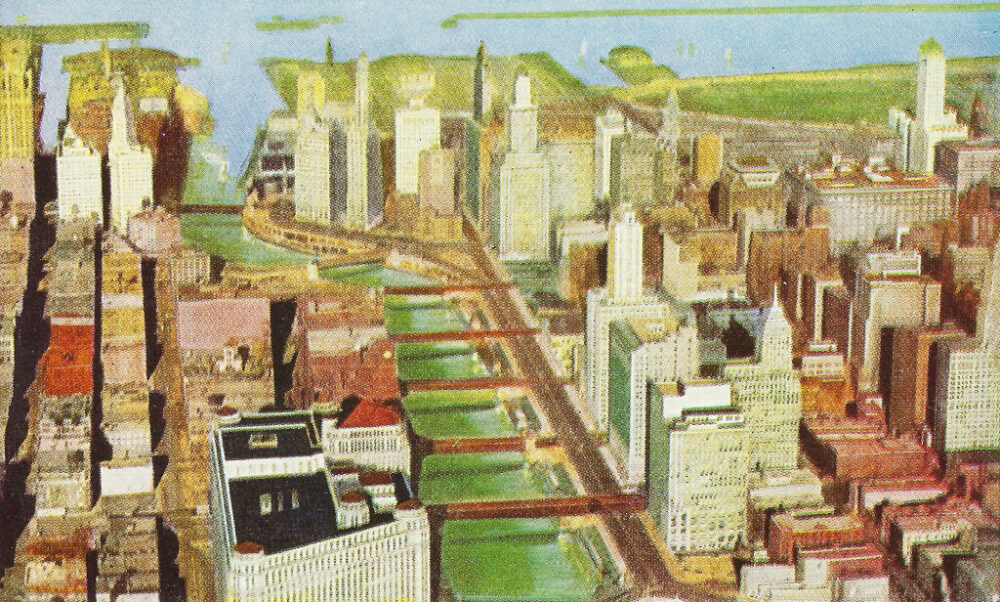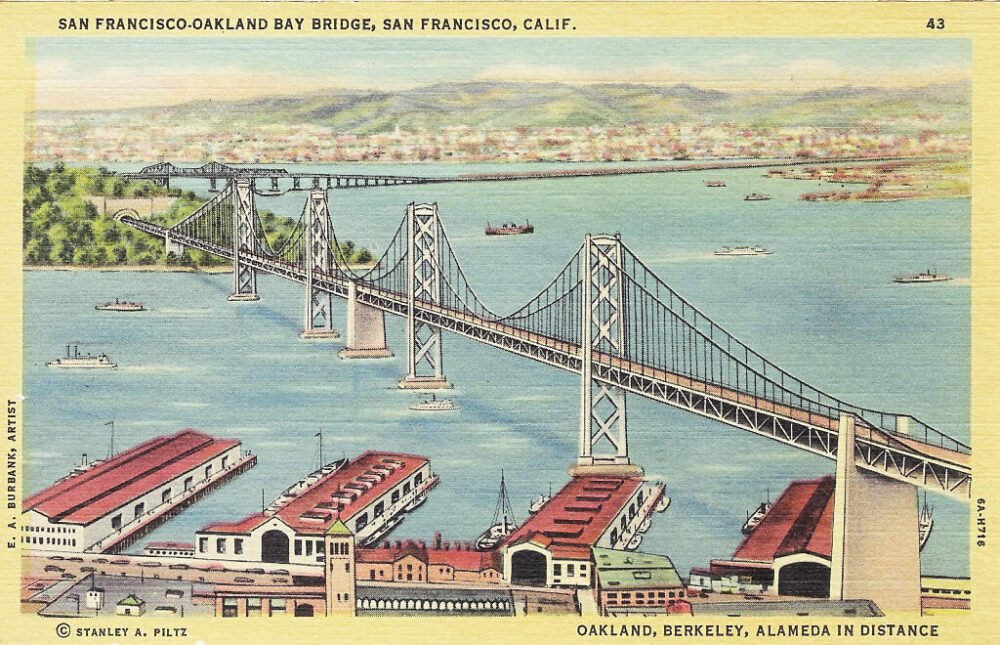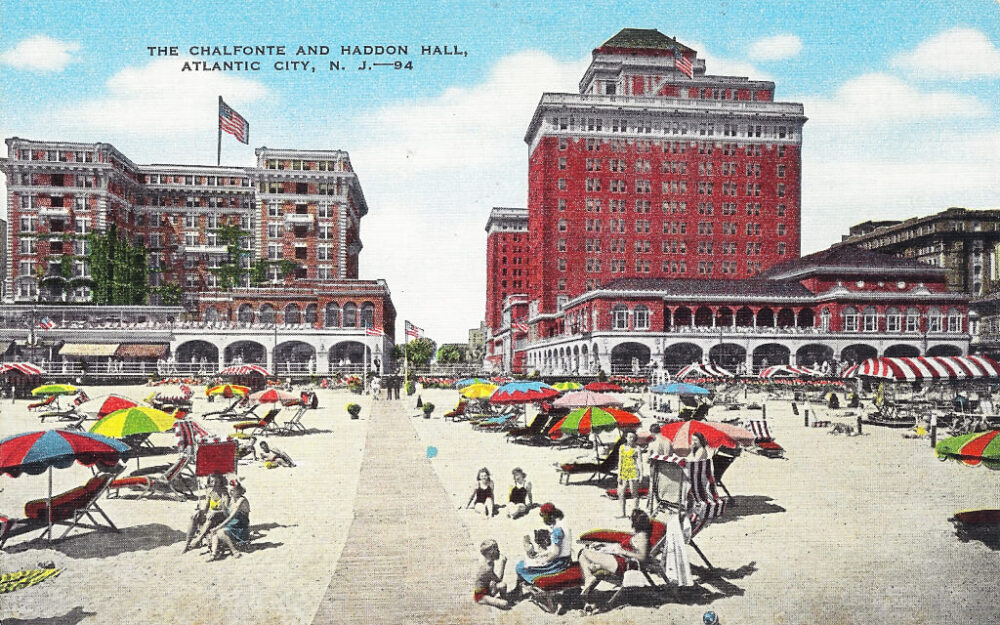Yes, the photo above is a scan of an old postcard. The bridge in the foreground is the one railroad bridge that crosses onto Cape Cod. Looking upward towards Cape Cod Bay are the two roadway bridges, known as the Bourne and Sagamore bridges––both of which I have driven across numerous times over the years. Primary passenger activity over the rail bridge occurs during the summer months. For a number of years in the past, Amtrak operated a couple of “excursion” trains, which, between Memorial Day and Labor Day, would travel from New York City to Cape Cod on Friday evenings and return on Sunday evenings. Present day, there’s the CapeFLYER, which operates from Boston between Friday evenings and Sunday nights through the three summer months.
Before looking at another group of postcards, let me tell you that I came across a box simply marked “postcards” while helping a friend dispose of items as she was downsizing from a large home that her family had occupied for more than 30 years. I took the box and just recently got around to looking at its contents … something like a couple of hundred cards that were printed at least 50 years ago, some likely closer to 70, and apparently collected by her parents or in-laws during their travels.
For passenger trains headed onto Cape Cod, their destination is Hyannis, the primary commercial center for the Cape. This card shows the harbor at Hyannis with pleasure and sightseeing craft as it looked on a day long ago. If you are not familiar with Cape Cod, Hyannis is one of the largest villages on the Cape, located on its south shore about midway out to where the Cape makes its sharp left turn and heads up to Provincetown, which sits at the very tip.
Hyannis is also the location of the Kennedy Compound, a property occupied for several generations by the family of President John F. Kennedy. This memorial to the late president sits adjacent to Veteran’s Memorial Park. The fountain in the foreground represents the Eternal Flame found at the Kennedy Memorial in Arlington National Cemetery.
I’m following up with another memorial/monument photo. This one’s located in Cameron Park in Sunbury, Northumberland County, in north-central Pennsylvania. It honors the dozens of area men who died during the battles of the Great Rebellion, otherwise known as the American Civil War. The park is named in honor of Colonel James Cameron, who led the volunteers and died at the Battle of Bull Run.
Mackinac Island is located at the upper end of Lake Huron, right where the state of Michigan divides between what is known as the Upper and Lower Peninsulas. It is reached only by boat, and the primary mode of transportation is horse and carriage. There are only two motorized vehicles on the island, both emergency vehicles secreted in a building not to be seen by the visiting public unless there’s an emergency. Even UPS and FedEx make their deliveries from a flatbed wagon pulled by a horse!
This is Arch Rock, which rises 149 feet above water level and is described as “the most famous of attractions to be found on Mackinac Island.” My wife Alicia and I spent a week on the Island about a dozen years ago, yet in touring the island, I have no recollection of being shown or seeing this natural rock bridge.
It’s my sense that most people would say that Mackinac’s most famous attraction is the Grand Hotel, which was the primary setting for the 1980 film Somewhere in Time.
Staying in Michigan, this is the Upper Falls of the Tahquamenon River. It has a water drop of 48 feet and is located in the state’s Upper Peninsula. The name Tahquamenon means “golden water.”
While this postcard image did not translate all that well in this digital age, I have included it because of its interesting perspective. In case you are not familiar with Chicago and its downtown … did you know that a river runs through the middle of the city? These are bridges that cross the Chicago River so that the city can function and keep moving. The blue at the top of the picture is Lake Michigan.
This five-mile bridge spanning San Francisco Bay connects San Francisco to Oakland-East Bay, California. It opened for traffic in 1937. I’ve been across this bridge a number of times in years past, yet there is one date on which I was on the bridge I’ll never forget … April 4th, 1968.
This was during the time that I was employed at WJIB in Boston. The station was just months old yet had seen dramatic success in listener response. Based on this, the owner of Kaiser Broadcasting’s president sent me to a sister station, San Francisco’s KFOG, to see what guidance I could provide for increasing their listenership. On this afternoon, I was riding across this bridge in a car with KFOG’s manager when the programming was interrupted by a bulletin … announcing that Dr. Martin Luther King, Jr., had just been assassinated!
Our final postcard––like most––does not have a copyright date, yet it definitely harks back many decades to when Atlantic City proudly was proclaimed as America’s Playground! As a child, which would have been in the 1940s, I can remember an occasion when I joined my aunt, uncle, and older cousins to take the train from Camden, New Jersey––across from Philadelphia––for a day in Atlantic City. This was the kind of scene you expected back then.
As the city was losing its glitter, the late 1970s saw the arrival of gambling and the first casinos on the East Coast, which brought about the first Renaissance; yet, as a couple of decades passed, with the arrival of nearby gambling opportunities, a new round of dark clouds began appearing!
And that, my friends, is a brief history tour as told through postcards from days past …. I do hope you found it interesting.
AND, if you have interesting stories related to any of these stops or similar travel experiences which you feel may be of interest to others, let us hear from you! Thank you.
